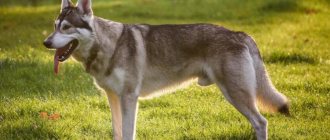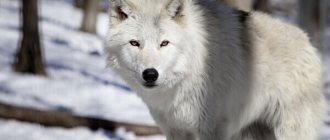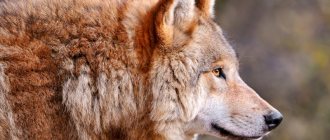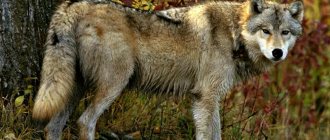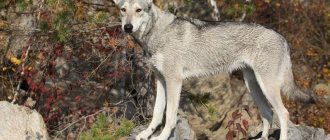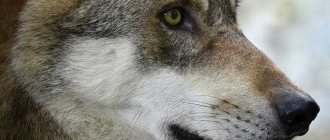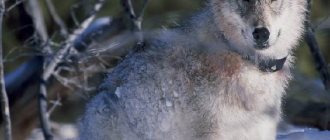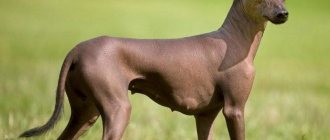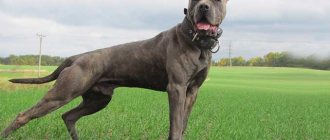I am a veterinarian by training, and became one when I had several dogs. Then, together with my cynologist sister Svetlana, they opened a wolf shelter. There are currently 13 guests. We dream of creating a national wolf center with the possibility of reintroducing animals. I tell you how wolves fall in love and why they form packs.
Reintroduction is a method of restoring rare animal species, when a population is artificially recreated in conditions close to natural, and then the animals are released into the wild.
My first pet's name was Zorro. Once he fell into a trap, and the new owner decided to subjugate and domesticate him, for which he settled him on his property in an elite cottage village.
Then the owner went abroad, and no one needed Zorro. Workers found him, exhausted and sick, and handed him over to volunteers for foster care. That's when we met. I began to go to Zorro, he recognized me, was happy about me and allowed me to scratch my sides.
An enclosure for a wolf is not the same as an enclosure for a dog; a few posts and a net are not enough. The area of the enclosure for one wolf must be at least 200 m²
As a result, we managed to place him in the Yaroslavl zoo. Now Zorro lives there as part of a pack, the territory is large - a whole hectare, the wolves are at ease there.
Reference
At the moment, there are less than 50 thousand wolves left in the country. There are several reasons: active extermination of predators, reduction in the natural habitat of wolves, a decrease in the number of wild boars, deer, elk and roe deer (the main food supply for wolves).
In central Russia, the number of wolves numbers in the hundreds. According to game managers, the most wolves are closer to the capital in the Smolensk and Tver regions - approximately 250 each, in the Kostroma region - 170, in the Vladimir region - only 30, half of them are in the Klyazminsko-Lukhsky reserve, and in the Moscow region there are no more than 10 predators left .
Reproduction: wolf cubs - birth of puppies. How does a pack raise wolf cubs?
A wolf's lair is a hole where a she-wolf raises wolf cubs. Wolves make their dens in secluded places. In this case, the place must have a good overview. Wolves often use empty burrows of other animals as dens.
Wolves breed annually in January-February, the first breeding period begins at the age of 2-3 years. The duration of pregnancy for a she-wolf is about two months. In the spring, wolf cubs are born in the den. Typically, a female gives birth to 4 to 8 wolf cubs. Wolf puppies are born deaf and blind; during the first days of the babies' lives, the she-wolf is constantly nearby. They begin to see and hear at about 10-12 days of life. After three weeks, the wolf cubs leave the den for the first time and begin to taste meat at the same time. The entire pack takes part in raising and raising wolf cubs. Wolves bring the best meat to the den with their babies. In small wolf cubs, the color has a grayish-brown tint, which changes with age. At the age of 2 months, the wolf cubs leave the den, but still stay close to the hole. Such places are protected by vegetation from prying eyes. Wolf puppies learn the basics of hunting and attack shrews and mice.
Wolf cubs grow rapidly and their weight increases almost 30 times in the first four months. Newborn wolf cubs have blue eyes. At the age of 8 months, the cubs' eyes change to yellow. By the end of the first winter after birth, the wolf cubs reach adult size. The common wolf lives 12-15 years.
Where is it located?
Most often, the lair, as the wolf’s home is called, can be found on the southern or southwestern slopes of hills, hills, and river banks. Such places are well warmed up by the sun in the spring, and the snow melts off of them more quickly. In addition, wolves make a lair near a watering hole - a natural body of water (river, stream, lake, pond, etc.). As a rule, we are talking about a distance of half a kilometer, but in the steppe zones, hunters found wolf shelters more than ten kilometers from the river.
Since wolf cubs are born and spend the first months of their lives in the den, it must meet basic safety standards: in front of the entrance there is a clearly visible “playground” for the young animals. Outside it, there are usually natural shelters in the form of thickets or stone passages and labyrinths (if we are talking about mountainous areas), which allow adult wolves and young animals to quickly hide when a threat approaches.
What does it represent?
The den dug in the ground consists of no more than a one and a half meter trench. Next comes the corridor, which is half a meter in diameter, ranging in length from two to three, rarely up to ten meters. The passage ends with a nesting chamber, which has no bedding. Camera dimensions: approximately 150 x 100 x 70 cm.
But this name is given to the dwelling of wolves not only in the steppes and tundra areas. In mountainous areas, wolves can build their dens much closer to the earth's surface - in crevices, caves and in recesses under stones. Naturally, the corridor will be much shorter.
How our shelter came to be
Gradually the number of wolf wards grew. There was nowhere to put them. In 2022, together with Svetlana, we created the first and only shelter for wolves in Russia.
We were in a hurry, because we had to urgently pick up the animals from the foster care and temporarily rented territory. It had to be done in a week. I took out several loans at once, and we quickly began building enclosures.
In 2022, my sister and I decided not to expect favors from society and nature and created the first and only shelter for wolves in Russia
The staff is minimal - four people run the shelter: my husband Yaroslav and I live here permanently, and my sister Svetlana comes to us periodically.
What does it eat?
Wolves feed depending on local conditions. Usually this is animal food. Wolves, thanks to their excellent sense of smell, can easily understand the condition of their prey.
Often these predators attack wounded, sick or old animals. Wolves attack large animals only in packs. These are buffalo, deer, and so on.
Godfather will not bite godfather
In various fairy tales, the relationship between a wolf and a fox is more or less friendly; often the fox is the wolf’s godfather and, although he often makes fun of him, still remains his “strategic ally.” And therefore, many children (and adults) think that in nature, if the fox and the wolf are not friends, then, in any case, they are not at enmity. In fact, there is antagonism between these animals. Moreover, when wolves kill foxes, they very rarely eat them. This feature of the behavior of these predators is still incomprehensible to zoologists. And hunters have a sign: where there are many wolves, foxes disappear.
It must be said that the foxes, if possible, “pay them in the same coin.” If a fox comes across a litter of puppies and there is no seasoned one nearby, then she will not miss the opportunity to destroy her enemies.
pixabay.com
Kinds
Arabian
In taxonomy, the wolf species includes about 30 modern and more than 10 extinct subspecies. With the advent of new results from research on the genome of certain varieties, changes are made to the classification. For example, six subspecies were identified in the African wolf based on the results of genetic analysis. Currently, representatives of the species are:
- Maned wolf . The species' range is limited to the northern part of South America. Adults are covered in red fur, darker on the paws, have a pointed muzzle and large, pointed ears, giving them a fox-like appearance. The species got its name from the long dark hair that covers the withers, forming something like a mane.
- Tundra wolf . The species is endemic to the northern part of the Eurasian continent. You can recognize it by its thick fluffy fur, the color of which can be pure white, light gray or grey.
- Melville Island wolf . Found in the polar regions of North America and Greenland. It is distinguished by very light fur and large size (the weight of males can reach 80 kg). This is one of the few species whose historical range has remained virtually unchanged.
- Asian wolf . Distributed in Turkey, Iran, India, as well as in nearby regions. It has a brown or brown coat color, while the fur is practically devoid of undercoat.
- Iberian wolf . Lives in northern Portugal and Italy. A distinctive feature of the species is the presence of dark spots on the forelimbs and small white markings above the upper lip.
- Tibetan (Mongolian) wolf . The range extends to the southeast of Russia, Mongolia, the highlands of India, and the central part of China. Individuals are medium in size, their fur color is light brown with a darker back and a light belly.
On the territory of our country, the most widespread are Siberian forest, Central Russian forest, steppe and Caucasian wolves. They all have approximately the same size and differ only in color, which is dominated by light gray, rusty gray and brown tones.
The most numerous subspecies of wolf are domestic dogs.
Extinct species include the Florida, Japanese, and Newfoundland wolves.
